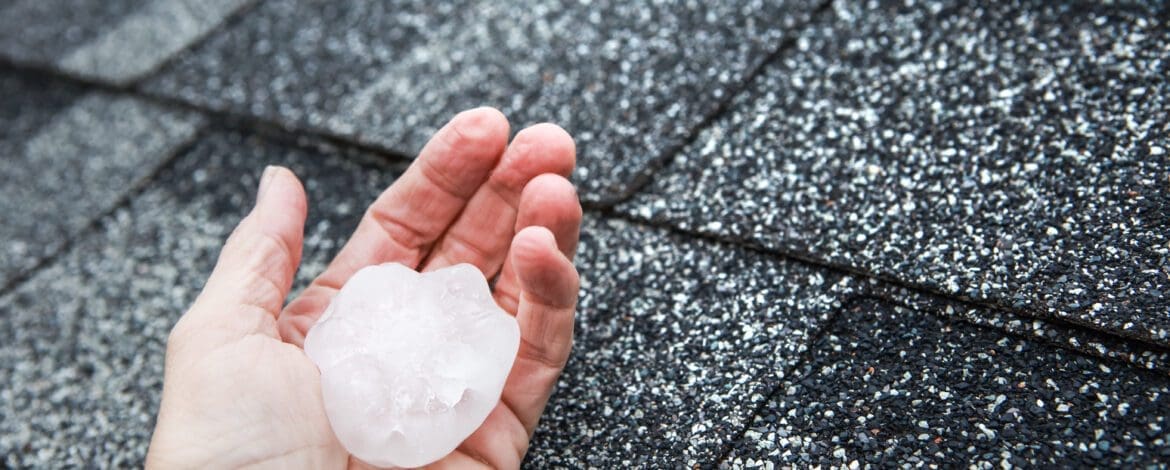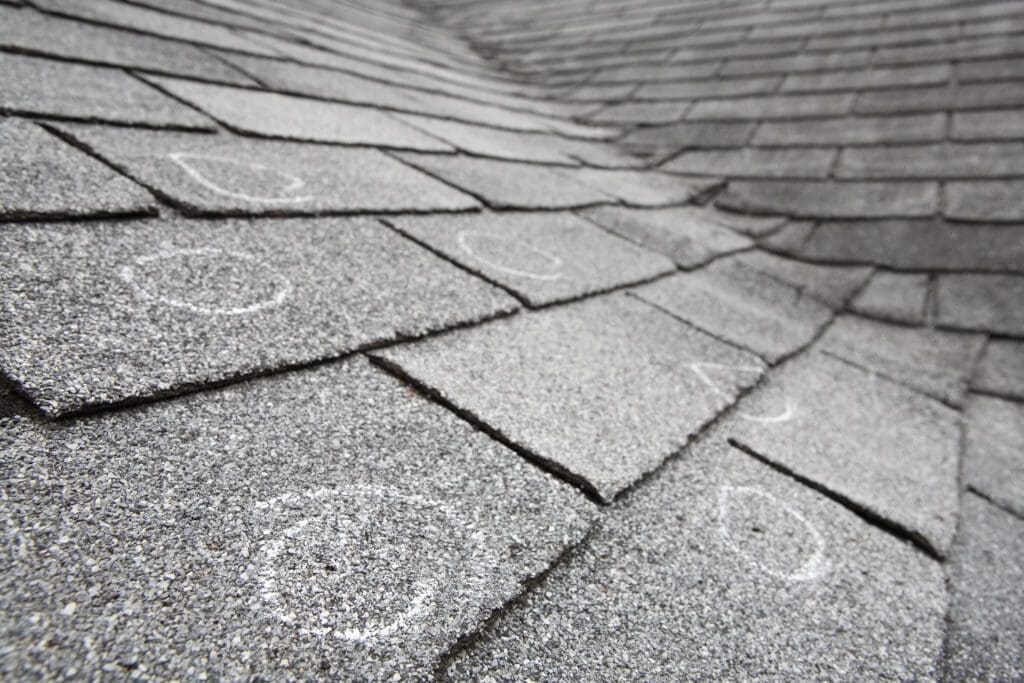Hail damage on roofs is fairly common, but it can also be subtle and difficult to spot. That means quite a lot of hail damage goes unnoticed, and therefore it goes unrepaired. Oftentimes, homeowners don’t realize their roof has some hail damage until they’re preparing to sell the home. Then, a buyer’s inspection reveals the damage. At that point, they have a hassle to deal with. Instead of that scenario, let’s consider a proactive approach. In Florida, asphalt shingle roofs are the most popular, but tile roofs are also common. So let’s look into hail damage on tile and asphalt shingle roofs.
How To Spot Hail Damage On Roofs
If you suspect—or know—that your home has endured a hailstorm, it’s wise to check things out when it’s safe to do so. We’re not recommending that you get up on the roof, though. Leave that to the professionals, unless you’re an experienced handyperson. For phase I of your investigation, you’re just checking things out. Feel free to take photos. Keep in mind that your photos will typically show hail dimples and damage much better in the early-morning or later-evening light. Mid-day sun tends to blast away the contrast and shadows.
When you’re standing on your yard or driveway and looking up at your roof, though, especially if it’s a two-story roof, it can be tough to spot hail damage. So go ahead and check some of the other bits and pieces around the property, too. Check any metal flashing you can see, along with metal gutters and downspouts, vents on the roof and on walls, and the AC unit, and look for multiple small dents. Mailboxes too, if yours is located right at your home, plants stripped of leaves, dents on car hoods and roofs are all solid clues, as well.
What Does Hail Damage On A Shingle Roof Look Like?
As you might expect, large hail will cause major damage to almost everything it contacts. For your home, that usually means hail balls of around 1″ diameter and larger will cause visible damage to your shingles. This damage often looks like bullet holes. It’s not pretty.
Smaller-size hail can also damage shingles, though. This type of damage is usually more cumulative, as pea-sized hail will gradually wear down your shingles without blasting holes in the shingles that look like bullet holes. Smaller hail pelting the surface of shingles will cause the protective granules to shed and wash away. Additionally, the impact on the fiberglass mat breaks it down, causing small cracks and shortening its life. Over time, either type of damage, visible or not visible, can lead to extensive roof damage, including the decking.
GAF is one of the largest manufacturers of roofing products in North America, and they deal with this problem pretty often. You can check out their resources here. GAF and CertainTeed, another top shingle manufacturer, also make impact-resistant shingles. These shingles look like their other shingles but both manufacturers claim that the impact-resistant shingles are more “rubberized”, which means they will flex more when hail hits them. Here are GAF’s Timberline impact-resistant shingles and here are CertainTeed’s impact-resistant shingles.
What Does Hail Damage On A Tile Roof Look Like?
Tile roofs, both traditional clay tile and concrete tile, are less vulnerable to hail damage than asphalt shingles. Large hailstones can damage both types of tile, though. When hailstones get to be over 1.5″ in size, they can start to wreak havoc and break your roof tiles, often at the corners.
The Tile Roofing Industry Alliance notes that roof tiles are tested to withstand hail. “While roof tiles are designed to perform well in hail regions, they may be damaged in severe hail storms producing hail stones larger than 2” in diameter. Roof tiles are tested in the range of a one- to two-inch simulated impact testing in accordance with FM 4473 Impact Testing Standard. ” (From Tile Roofing Institute Technical Brief #2010-001)
How To Determine That Your Tile Roof Has Hail Damage
Do not go up on the roof! The last thing a damaged tile roof needs is foot traffic. Grab your binoculars and check it all out from ground level. If the hail storm has caused damage, it should be pretty obvious. Again, pay close attention to the corners. Do you see cracks? Or maybe the corners actually broken off? That happens.
What To Do If You Discover Hail Damage On Your Roof
If you’ll be working with your insurance company, contact your insurance agent to file a claim. Your agent will send an adjuster to evaluate the damage. You’ll also want to contact roofing contractors to get bids for repair or replacement. You might be dealing with multiple contractors for multiple projects on things that the hailstorm damaged. Those could be the roof, your AC unit, windows, and so on. This article gives you some insight on that process.
Be advised that under Florida law, it’s no longer mandatory to replace the entire roof when more than 25% of the roof is damaged. That was the case for many years, but the Florida Legislature changed that law in 2022. As we noted in Florida’s New Roofing Law:
The new law states that a roof that is compliant with the 2007 version of the Florida Building Code (FBC) can be repaired. A full replacement of the roof is no longer required. The extent of area needing repair doesn’t matter, as long as the roof is in compliance with the 2007 FBC.
It’s important to know that repairs to your existing roof may not be supported by the roofing manufacturer’s warranty. If your insurance company is pushing for repairs, but the new materials are not covered by a standard warranty, that is unacceptable. You might get a repaired roof with no warranty.
We’re Here When You Need Us
If you’d like to talk about an inspection for hail damage on your tile or shingle roof, give us a call at 813-373-9088. Our team has more than 40 years of experience in roofing. You can also use this form and we will contact you.





